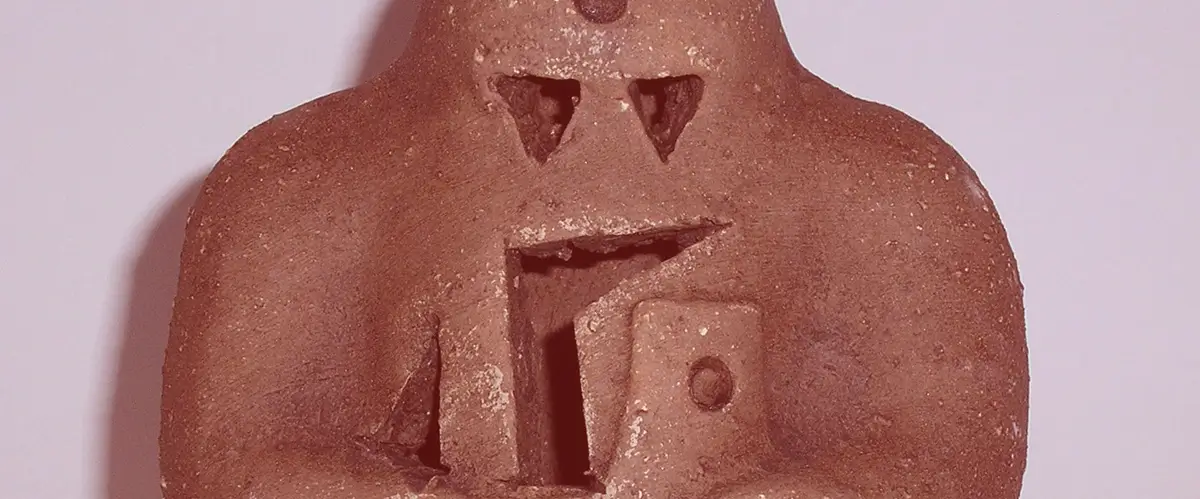What are Golems?
Golems are creatures from Jewish folklore that are typically made of clay or mud and brought to life through mystical or religious means, often involving the recitation of specific words or the use of a particular ritual.
In some versions of the story, a golem is created to serve as a protector or servant to its creator, while in others, it is a powerful weapon or tool that can be controlled by its master.
The concept of the golem has inspired many works of fiction and influenced popular culture, and the term is sometimes used metaphorically to describe a mindless, automaton-like person or entity.
The earliest reference can be found in the Talmud
The idea of a golem is deeply rooted in Jewish folklore and mythology. The earliest known reference to a golem can be found in the Talmud, a central text of Rabbinic Judaism that was compiled between the 2nd and 5th centuries CE. In the Talmud, the story is told of a Rabbi who creates a golem by reciting the word “emet” (meaning “truth” in Hebrew) and erasing the first letter, leaving the word “met” (meaning “dead”). This brings to life a creature that can perform tasks for the Rabbi.
Over time, the concept of the golem evolved and became more complex. In the Middle Ages, Jewish mystics known as Kabbalists began to incorporate the idea of the golem into their mystical practices, associating it with the creation of life and the manipulation of the divine forces that govern the universe. According to Kabbalistic teachings, the creation of a golem requires great spiritual purity and knowledge of the secret names of God.
The Golem of Prague
During the 16th century, the most famous golem story emerged: the Golem of Prague. According to legend, Rabbi Judah Loew ben Bezalel, also known as the Maharal, created a golem to protect the Jewish community of Prague from persecution. The golem was said to be made of clay and brought to life by placing a magical shem (a Hebrew word for a divine name) in its mouth. The creature was immensely powerful and served as a fierce protector of the Jewish community, performing tasks such as carrying heavy loads and defending the ghetto against attackers.
The story of the Golem of Prague became very popular and has been retold many times in literature, film, and other media. The golem itself became a symbol of Jewish resistance and a powerful cultural icon. The legend also served as a commentary on the political and social conditions of the time, with the golem representing the struggle of the Jewish community against persecution and oppression.
In subsequent centuries, the concept of the golem continued to evolve and adapt to different cultural contexts. In some versions, golems were depicted as obedient servants or powerful weapons, while in others they were portrayed as dangerous and uncontrollable. The idea of a golem has also been adapted to address modern concerns about technology, artificial intelligence, and the ethics of creation.
Golem-like creatures in other cultures
While the golem legend is primarily associated with Jewish folklore and mythology, there are versions of the story in other cultures and traditions as well, for example:
In Hindu mythology, there are tales of beings known as “kumbhakarna,” which are often described as giant clay golems or living statues. According to the legend, kumbhakarna were created by the god Vishnu to fight against demons and protect the earth. Like Jewish golems, kumbhakarna were powerful and could be controlled by those who knew the proper incantations.
The concept of the golem is also present in Greek mythology, where there are stories of living statues or “automatons.” One famous example is the giant bronze statue of Talos, which was said to have been created by the god Hephaestus and given to the island of Crete to protect it from invaders.
In Chinese folklore, there are tales of creatures known as “zouwu,” which are often depicted as lion-like beasts made of clay or earth. Like Jewish golems, zouwu were created to serve their masters and could be brought to life through magical means.
In Slavic folklore, there are legends of beings known as “vodyanoy,” which are often depicted as water golems or spirits. These creatures were said to live in rivers and lakes and could be summoned by those who knew the proper spells or incantations.
While these versions of the golem legend share some similarities with the Jewish tradition, they also have distinct cultural and religious contexts that shape their characteristics and roles. Nevertheless, the idea of a powerful, magical creature made of earth or clay has resonated across different cultures and traditions, reflecting the enduring appeal of the golem as a symbol of creation, power, and protection.
Modern interpretations of golems
The concept of the golem has continued to evolve and adapt to contemporary culture, and it has inspired many modern interpretations in literature, film, and other media.
Comics
In “Hellboy” by Mike Mignola, the character Roger the Homunculus is a golem-like creature created by a mad scientist. He is made of various body parts and is brought to life through alchemy, but he struggles with his identity and purpose.
Film
The 1920 German expressionist film “The Golem: How He Came into the World” is a classic adaptation of the golem legend. In more recent years, films such as “The Sorcerer’s Apprentice” and “Frankenstein’s Army” have featured golem-like creatures that are brought to life through magic or science.
Gaming
In the video game “Bloodborne,” there is a boss character known as the Cleric Beast, which resembles a golem or living statue. The character is a formidable opponent, and its appearance is heavily influenced by Jewish folklore and mythology.
Literature
The golem concept has been explored in many contemporary novels, such as “The Amazing Adventures of Kavalier & Clay” by Michael Chabon and “The Golem and the Jinni” by Helene Wecker. These books offer new perspectives on the golem legend, exploring themes such as identity, belonging, and the struggle for power.
Artificial Intelligence
In recent years, the concept of the golem has been adapted to address modern concerns about artificial intelligence and robotics. Some scholars and writers have likened AI to golems, arguing that these technologies can be powerful and useful but also potentially dangerous and unpredictable.

